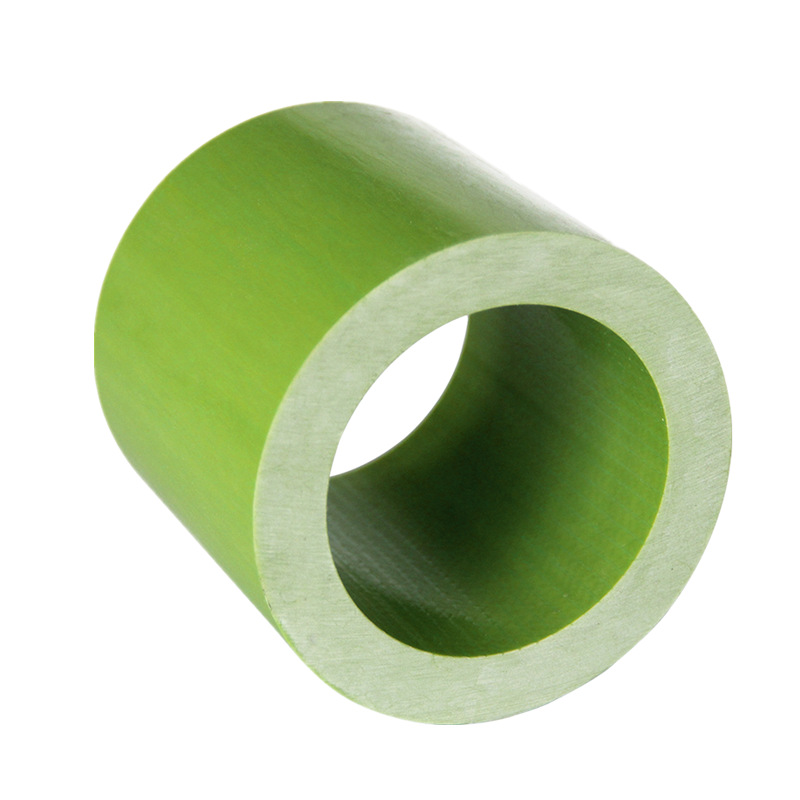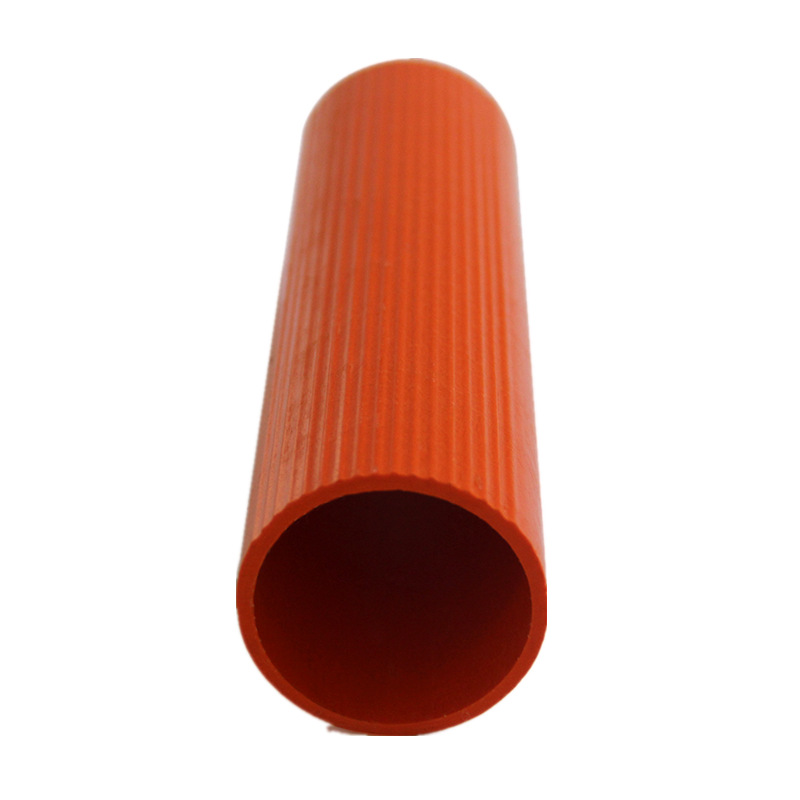Overview
FRP (Fiber Reinforced Plastic) Round Tubes are cylindrical composite structures produced through filament winding or pultrusion processes, combining glass or carbon fibers with thermosetting resins. Filament-wound tubes feature circumferential and helical fiber orientations for optimal pressure resistance, while pultruded tubes offer uniform longitudinal strength. Typical diameters range from 25mm to 1200mm, with wall thicknesses of 2-20mm and lengths up to 12 meters.
These tubes have a smooth inner surface (Ra ≤ 0.2μm) to minimize fluid friction and a durable outer gel-coat finish. Mechanical properties include tensile strength of 200-500 MPa, flexural modulus of 15-30 GPa, and impact resistance 10 times higher than steel tubes of similar weight. The composite construction allows tailoring for specific applications, such as pressure ratings up to 30 bar for fluid transmission or structural loads in mechanical systems.
Features
High Pressure & Impact Resistance: Filament-wound tubes excel in high-pressure fluid transport, while pultruded tubes provide excellent axial load-bearing capacity, making them versatile for both structural and fluid-handling roles.
Chemical Resistance: Inert to most acids, alkalis, and solvents, with resistance to substances like sulfuric acid (up to 70% concentration) and sodium hydroxide (up to 50% concentration), surpassing metallic pipes in aggressive environments.
Abrasion & Fatigue Resistance: The fiber-matrix interface reduces wear from particulate-laden fluids, and the non-brittle nature provides fatigue life exceeding 10^6 cycles under cyclic loading.
Lightweight & Easy Installation: Weighing 1/3 to 1/5 of steel tubes, they reduce installation costs with fewer supports needed and can be joined using adhesive bonding, flanged connections, or mechanical couplings.
Design Customization: Adjustable fiber layup allows optimizing for stiffness, impact resistance, or thermal insulation, with options for anti-static coatings (surface resistivity <10^9 Ω) for electrostatic-sensitive industries.
Applications
Fluid Systems: Chemical pipelines, potable water distribution, and oil/gas well casings in onshore and offshore environments.
Structural Supports: Mechanical linkages, robotic arms, and sports equipment (e.g., bicycle frames, kayaks) requiring high strength and low weight.
Architectural Elements: Columns, canopies, and decorative tubing in commercial buildings, offering corrosion resistance and design flexibility for complex geometries.
Renewable Energy: Wind turbine tubular towers (lower sections) and hydroelectric penstocks, combining structural integrity with resistance to water and UV exposure.
FAQ
Q: How is FRP Round Tube pressure-rated?
A: Pressure ratings depend on wall thickness, fiber orientation, and resin type. Filament-wound tubes can handle higher pressures (up to 100 bar for specialized designs) compared to pultruded tubes (up to 30 bar).
Q: Can it be used for potable water systems?
A: Yes, when certified with NSF/ANSI 61 compliant resins, ensuring no leaching of harmful substances into drinking water.
Q: What is the recommended burial depth for underground installations?
A: Burial depth depends on soil type and traffic load, but generally 0.6-1.2 meters. The tube's high stiffness reduces the need for excessive backfill compared to HDPE pipes.
Q: How to repair a damaged tube?
A: Minor damage can be repaired with composite patches and resin; severe damage may require cutting out the section and inserting a coupling sleeve with adhesive bonding.






















